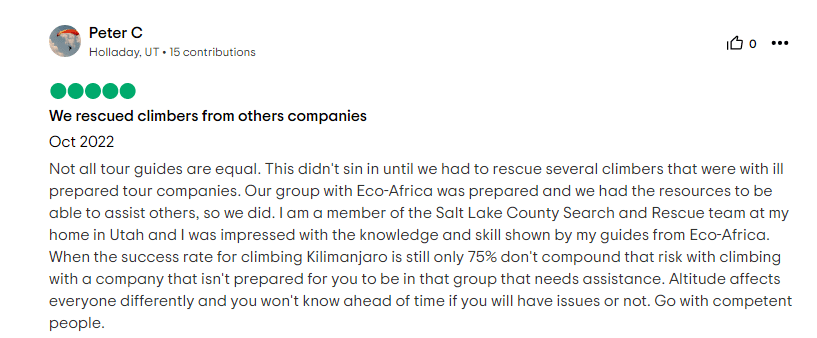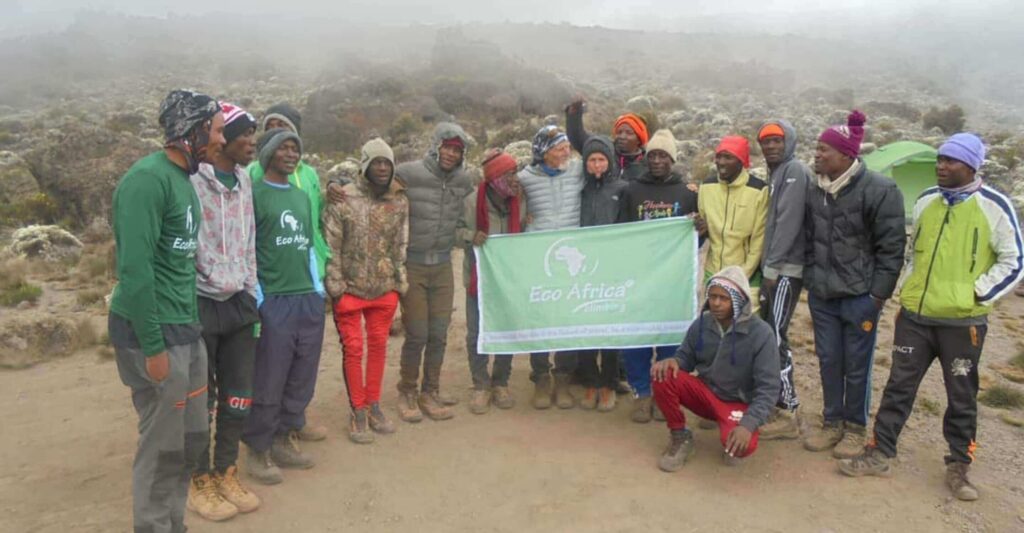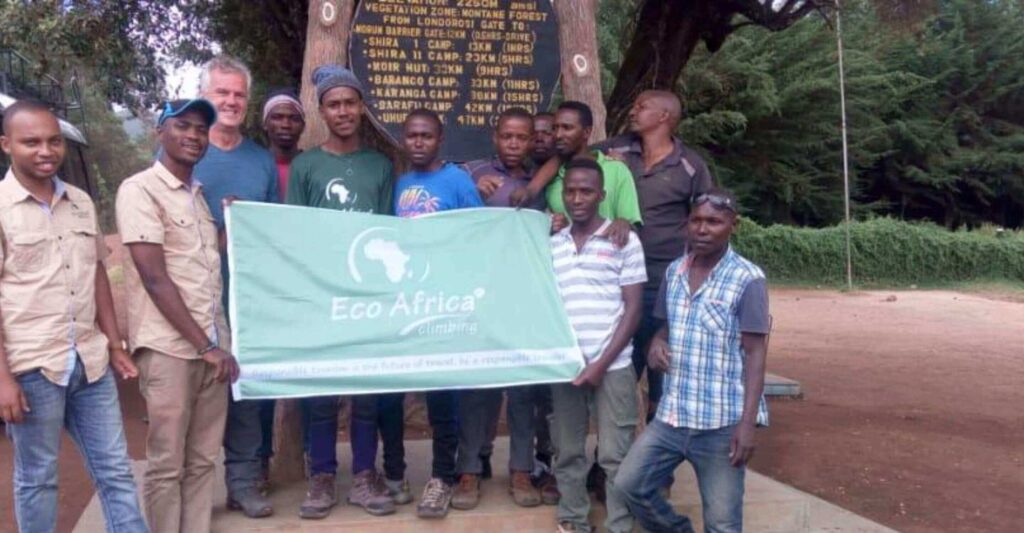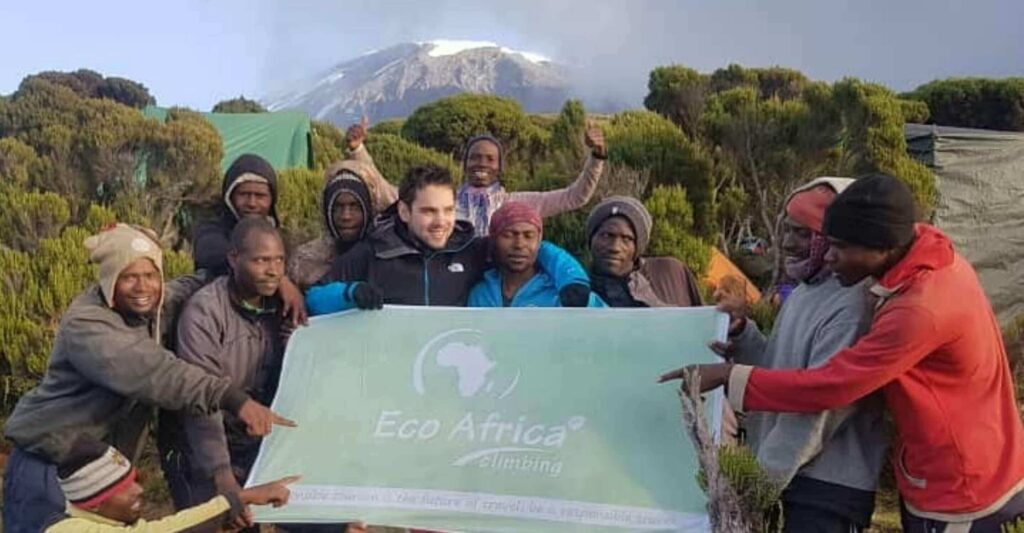ENSURING SAFETY WHILE CLIMBING MOUNT KILIMANJARO
Mount Kilimanjaro is a challenging climb that comes with inherent risks and is often regarded as dangerous. Annually, approximately ten climbers lose their lives on the mountain, although the actual number is believed to be much higher. Additionally, around 1000 climbers require evacuation from the mountain’s traps to a safer location. Altitude Mountain Sickness (AMS) is the primary cause of fatalities, and climbers are cautioned to be vigilant about monitoring the symptoms. It is essential for any prospective climber to comprehend the risks associated with the climb and to heed the warnings as a precaution, rather than fear-mongering. Although the dangers of high-altitude climbing can never be completely eliminated, they can be reduced by following the guidance of an experienced climber.
Acute mountain sickness refers to a medical condition caused by high altitude.
The concentration of oxygen at sea level is roughly 21 percent. However, as altitude increases, the percentage of oxygen in the air remains constant while the amount of oxygen inhaled with each breath decreases. Once you surpass an elevation of 12,000 feet (3,600 meters), only 40 percent of the oxygen molecules are accessible per breath, putting a strain on your body to adjust to the reduced oxygen availability. As you continue to climb, your body will struggle to adapt quickly enough to the diminished oxygen levels, leading to a condition known as Acute Mountain Sickness (AMS), which can afflict even the fittest individuals.
Acclimatization during the ascent of Kilimanjaro
AMS is primarily caused by ascending to high elevations too quickly. With sufficient time, the body can adjust to the reduced oxygen levels at a specific altitude through a process known as acclimatization. As such, acclimatization is critical for any climber hoping to succeed. To properly acclimatize, it is necessary to spend two to three days at a given altitude. During this time, the body undergoes various changes to enable it to cope with the low oxygen levels, such as an increase in the depth of respiration, the production of additional red blood cells to transport more oxygen, and an increase in capillary pressure, allowing blood to reach areas of the lungs that are typically not used during normal breathing. Furthermore, the body releases more enzymes that facilitate oxygen absorption in body tissues.
While there is more to learn about the scientific aspects, the onset of AMS symptoms usually occurs between 12 and 24 hours after arriving at a high altitude. These symptoms may include a headache, dizziness, nausea, loss of appetite, fatigue, shortness of breath, poor sleep, and irritability.
Additional hazards that may arise during a Kilimanjaro climb
In addition to Acute Mountain Sickness, climbers are cautioned about various other risks that may arise while ascending Kilimanjaro, including hypothermia caused by exposure to cold, falls and slips on rocky terrain, avalanches, tumbling off cliffs, heart attacks, diarrhea, cold and respiratory infections, ankle sprains, and exposure to tropical diseases such as Malaria and Typhoid.
In recent times, numerous fatalities and emergency evacuations have been linked to Mount Kilimanjaro climbing. The precise cause of these incidents – be it ignorance, insufficient preparation, or negligent tour operators – remains a subject of debate. However, it is possible to mitigate or even eliminate most hazards associated with climbing Mount Kilimanjaro through careful planning and adequate preparation. Therefore, with proper planning and preparation, climbing Mount Kilimanjaro can be a safe and rewarding experience.
Precautions we take for our safety
- With over 300+ climbers under their guidance each year, our experienced guides are well-equipped to prevent, identify, and treat altitude sickness.
- Twice daily health assessments are conducted using a pulse oximeter to monitor your pulse rate and oxygen saturation levels.
- The Lake Louise Scoring System (LLSS) is implemented by our team to assess the presence and extent of altitude sickness symptoms that you may be experiencing.
- Our guides hold Wilderness First Responder (WFR) certification, which enables them to make crucial medical and evacuation decisions on site with the appropriate tools and expertise.
- On all climbs, we bring bottled oxygen and can promptly administer it to climbers who are experiencing moderate to severe altitude sickness as a treatment measure.
- Our guides are capable of initiating helicopter evacuation through KiliMedAir which is a helicopter rescue operation
- Our team possesses a first aid kit to manage minor injuries such as scrapes, cuts, and blisters.
The measures mentioned above guarantee that our guides and staff at Eco-Africa Climbing are equipped to ensure the safety of our climbers and have the capability to provide treatment for any illnesses or injuries that may occur.
Ensuring your safety and good health is our topmost priority at Eco-Africa Climbing.
On Kilimanjaro we have Two Types of Evacuation
Stretcher Evacuation:
Our mountain crew can assist with a one-wheel stretcher. You’ll be taken from the upper campsite down to a lower campsite and then to a junction where the Kilimanjaro National Park ambulance will transport you to the nearest hospital. If the client is not in critical condition, they will be escorted on foot to the lower campsite until they reach the junction, where the Kilimanjaro National Park ambulance will take them to the nearest hospital. This type of evacuation is mainly used for clients who do not have insurance or in cases where helicopter evacuation cannot be performed, such as during the night or in bad weather when the helicopter is unable to land on Kilimanjaro.
Helicopter Evacuation:
This option is operated by KiliMedAir and Tropic Helicopters. You’ll need insurance that covers evacuation up to 6,000 meters above sea level. If your insurance doesn’t cover this, you can hire a helicopter for $3,500 for evacuation only, or $5,500 for both evacuation and medical assistance. Please note that the helicopter operates from 7 am to 6 pm only. Additionally, in cases of heavy clouds or adverse weather conditions, the helicopter may experience difficulty landing on Kilimanjaro, and it may be impossible to conduct an evacuation at that time.
How KiliMedAir Works:
If your insurance covers evacuation up to 6,000 meters, and you require either evacuation or both evacuation and medication, the guide will notify our office in Moshi, and we will inform KiliMedAir. KiliMedAir will first confirm your coverage and policy by requesting that we send them the client’s insurance details, including the insurance name and policy. Once approved, the client will need to agree to pay for the evacuation service, which costs $3,500, or if the client requires both evacuation and medication, they will need to agree to pay $5,500. When KiliMedAir receives this confirmation from the client, they will come to Kilimanjaro to provide the necessary services, evacuating the client from the mountain. If the client requires medication, they will be taken to KiliMedAir’s hospital in Shanty Town. Once the client has received services from KiliMedAir, payment should be made via credit card or bank transfer. KiliMedAir will then provide all the necessary documentation to help the client claim the expenses from their insurance company. Upon returning home, the client can submit a claim to their insurance provider to recover the amount paid to KiliMedAir.
A Testimonial on Safety from a Previous Customer

Our Top Recommended Ethical Kilimanjaro Climbs
Ethical Kilimanjaro via Northern Circuit Route 9 Days
The Northern Circuit route is one of the best routes on Kilimanjaro.The route approaches Mount Kilimanjaro from the west….
From USD $3250
Ethical Kilimanjaro via Lemosho Route 8 Days
The Lemosho route is one of the newer routes on the mountain and a superb choice for your climb, It is our preferred route…
From USD $2950
Ethical Kilimanjaro via Machame Route 7 Days
Machame (“Whiskey”) Route is also known as the “Whiskey” route, the Machame route is now the most popular route on the …
From USD $2650


